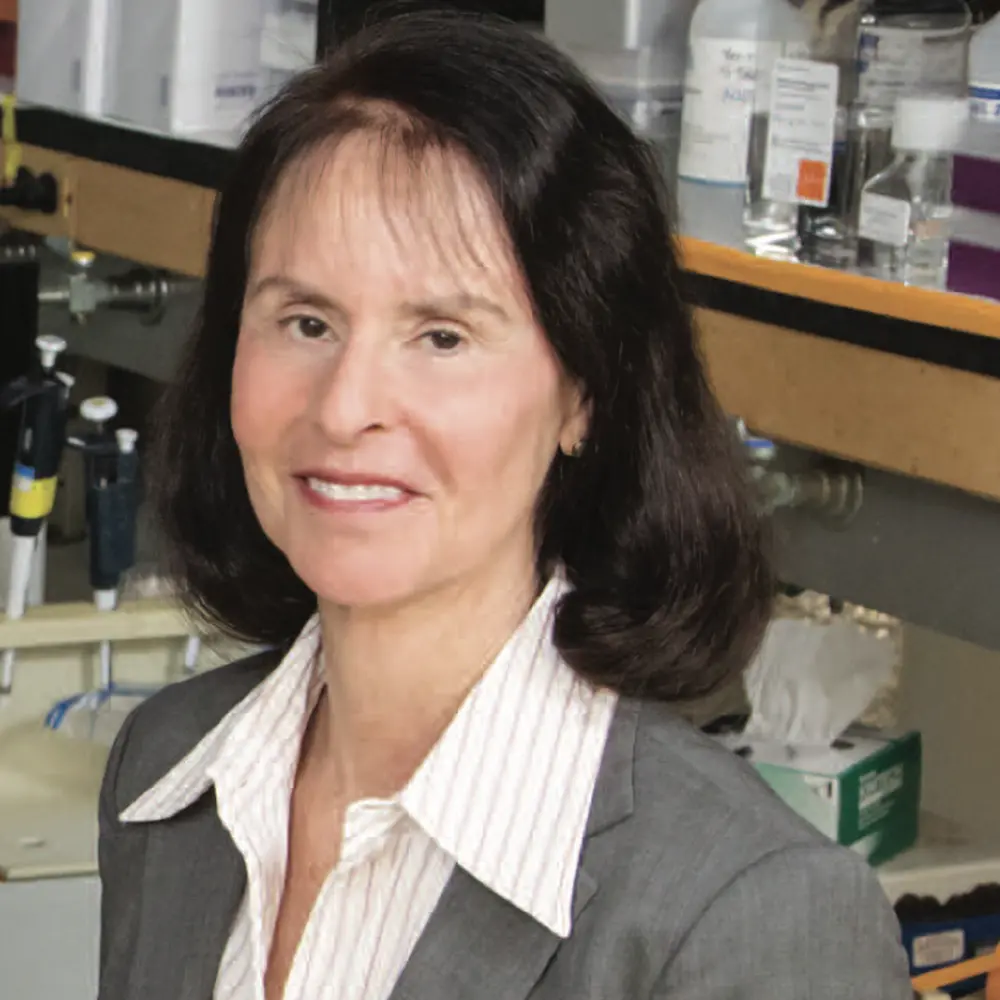
Benita Katzenellenbogen has delved into the causes and treatments for breast cancer and other hormone-dependent cancers for virtually her entire career. Her tireless work in the field has established her as a world-renowned expert.
Lately, Katzenellenbogen, Professor of Molecular and Integrative Physiology and of Cell and Developmental Biology, and her research group are “very much focused on targeted therapies.”
Cancer treatment approaches have changed in the past decades. As researchers learn more about cancer biology, including identifying subtypes that respond to different treatments, they have figured out ways to target specific cancer cells with a more precise approach. And the more they understand about the mechanisms at work, the more targeted those treatments have become, meaning that they effectively treat the cancer with greatly reduced side effects.
Of course, targeted therapies are not always a panacea. Even with the exciting results of targeted treatments, some cancers figure out a way to make a comeback. Why and how do cancers fight back? Those cancers that become “treatment-resistant” currently present one of the major challenges in the field. Working to describe the biology by which cancers change in response to these targeted therapies, and looking at certain “aggressiveness factors” that block treatment has motivated Katzenellenbogen’s lab for several years.
Several effective treatments for hormone receptor (HR)-positive cancers (which comprise about 70% of initial breast cancers) block the action of estrogen, turning the estrogen receptor (ER) off and thus thwarting the cancer. In cases where this treatment stops working, it is often because the ER becomes “constitutively active,” which means it no longer needs estrogen to turn on. This is one so-called aggressiveness factor, when the ER goes rogue, so to speak.
Katzenellenbogen’s lab has been working to understand how it is that the ER becomes constitutively active and then why that makes the cancer more resistant to treatment. Her lab is collaborating with John Katzenellenbogen and his laboratory in the Department of Chemistry to develop anti-estrogen molecules that might be able to inhibit the activity of these mutated estrogen receptors.
“Of the ER positive cancers that metastasize or resist treatment, 30-40% of them have these mutated ERs,” said Katzenellenbogen. So, finding a way to inhibit them would be a major breakthrough.
In another recent finding that holds promise for some of the most difficult-to-treat breast cancers, Katzenellenbogen’s lab has found an increase in the expression of the transcription factor FOXM1, another “aggressiveness factor.”
In one recent collaboration with oncologists in Korea, Katzenellenbogen’s lab observed an upregulation of FOXM1 in treatment- resistant cancers. Typically, FOXM1 is only found at significant levels during embryonic development. When it shows up in cancer, it makes the cancer much more robust and difficult to treat.
“High levels of FOXM1 are associated with less good patient outcomes,” said Katzenellenbogen.
Katzenellenbogen is interested in understanding the biology of this transcription factor. FOXM1 appears to be upregulated, not only in some breast cancers but also in other cancers, including colon and prostate that also have become resistant to treatment, as well as some glioblastomas and gastric cancers.
“We are interested in understanding how FOXM1 works, in other words, what genes does it turn on, and how does that impact the invasiveness of the cells.”
“We do know that many genes under FOXM1 regulation are genes associated with proliferation, invasiveness, and resistance to treatments,” she added.
As with the constitutively active estrogen receptor project, Katzenellenbogen is collaborating with John Katzenellenbogen’s laboratory to develop small molecule inhibitors that can effectively block FOXM1. For example, they are looking for compounds that might block FOXM1’s interaction with DNA or in some other way block its activity. Some inhibitory molecules have been identified previously, but they are not active enough or are not selective enough, meaning they interfere with too many other cell activities, says Katzenellenbogen.
One finding that has Katzenellenbogen intrigued is that FOXM1 upregulation is present in triple-negative breast cancers. These are breast cancers that do not respond to hormonal therapies, including tamoxifen and aromatase inhibitors. If the action of FOXM1 can be blocked, that might represent a possible breakthrough in treatment for this especially challenging subgroup of cancer, which comprises about 15% of all breast cancers.
Katzenellenbogen rarely stops to consider how far the field has come, but when she does, it is to appreciate that cancer is no longer the immediate death sentence it once was.
“We have made great progress in trying to understand the main drivers in cancer subtypes and to identify the best targets for therapy,” she said. “These days most cancers are considered diseases one survives; they are not always lethal.The numbers of people effectively treated even 20 years after diagnosis continues to increase.Through better sub- typing of cancers we know better the risk of recurrence so people are better monitored and even treated differently.”
And that is progress worth celebrating.
(Professor Katzenellenbogen gratefully acknowledges research support from the Breast Cancer Research Foundation, the Julius and Mary Landfield Cancer Research Fund, and the National Institutes of Health.)
